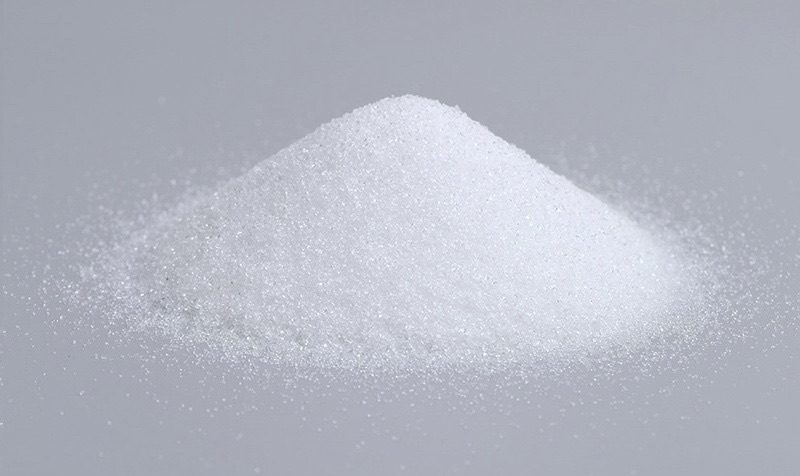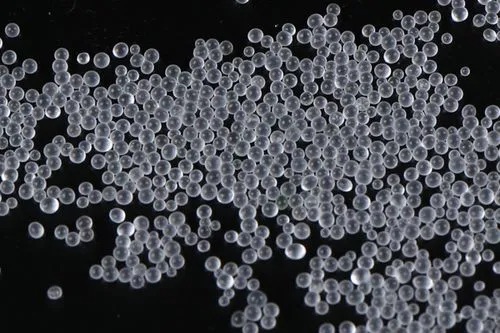

Anti-Adhesion Beads are an essential component of mass finishing processes, offering numerous benefits to manufacturers looking to achieve high-quality finishes on their parts. This blog will provide a comprehensive overview of Anti-Adhesion Beads, including what they are, how they work, common applications, and the benefits of using them in the mass finishing process.
Anti-Adhesion Beads are small, spherical beads that are added to the finishing solution along with other media such as ceramic beads, plastic pellets, or steel shot. They are designed to prevent parts from sticking to the walls of the mass finishing machine or to each other during the finishing process. Anti-Adhesion Beads are typically made from materials that are resistant to adhesion, such as Teflon, nylon, or other engineering plastics.
Anti-Adhesion Beads work by preventing parts from sticking to the walls of the mass finishing machine or to each other during the finishing process. Without anti-adhesion beads, some flat parts can stick together, causing damage to the parts or slowing down the finishing process. The use of these beads can help to increase efficiency, reduce cycle times, and improve the overall quality of the finished parts. This helps to ensure that the parts are able to tumble freely in the machine, leading to improved surface finish and geometry. By preventing adhesion, Anti-Adhesion Beads also reduce the risk of damage to the parts and the machine.
Anti-Adhesion Beads are commonly used in the mass finishing of various types of flat parts, including metal parts, plastic parts, and composite parts. They are also used in a wide range of industries, including automotive, aerospace, and consumer goods. It's good at flat parts finishing, such as washer polishing. Anti-Adhesion Beads are an essential tool for manufacturers looking to achieve high-quality finishes on their parts, and they are widely used in a variety of finishing processes, including tumbling vibratory finishing, and centrifugal finishing.

Anti-Adhesion Beads are a type of media used in mass finishing processes to improve the efficiency and consistency of the finishing process. They are added to the finishing solution along with other media such as ceramic beads, plastic pellets, or steel shot to prevent parts from sticking to the walls of the mass finishing machine or to each other. This helps to prevent scratches or other damage to the surface finish of the parts.
The use of Anti-Adhesion Beads in mass finishing helps to improve the surface finish and geometry of the parts by allowing them to tumble freely in the machine. By preventing adhesion, the beads also reduce the risk of damage to the parts and the machine. In conclusion, Anti-Adhesion Beads play a crucial role in ensuring the efficiency and consistency of mass finishing processes.
There are numerous benefits to using Anti-Adhesion Beads in mass finishing processes, including:
6.1 Improved Efficiency:
Anti-Adhesion Beads help to improve the efficiency of the mass finishing process by reducing the amount of media required to achieve a specific finish. They also help to prevent parts from sticking to the walls of the machine or to each other, which can reduce the risk of machine downtime and increase the speed of the finishing process.
6.2 Improved Surface Finish:
Anti-Adhesion Beads help to improve the surface finish of parts by allowing them to tumble freely in the machine. This results in a smoother, more consistent surface finish, free from scratches or other damage.
6.3 Reduced Risk of Damage:
Anti-Adhesion Beads help to reduce the risk of damage to the parts and the machine by preventing parts from sticking to the walls of the machine or to each other. This helps to extend the lifespan of both the parts and the machine.
6.4 Improved Consistency:
Anti-Adhesion Beads help to improve the consistency of the mass finishing process by ensuring that parts are able to tumble freely in the machine. This results in a more uniform surface finish, with less variation from part to part.
6.5 Reduced Contamination:
Anti-Adhesion Beads help to reduce the risk of contamination of the finishing solution by parts. This helps to maintain the quality and consistency of the finishing solution over time.
A manufacturing company specializes in the production of precision metal components. The company's mass polishing operations involve the removal of burrs, surface smoothing, and achieving a high-quality finish on various parts. However, they encountered challenges related to parts sticking together during the polishing process, leading to damaged parts and decreased efficiency.
7.1 Problem Identification:
a) Parts sticking together, causing damage and rework.
b) Lengthy processing times due to manual separation of parts.
c) Inconsistent surface finishing and reduced product quality.
7.2 Solution:
To address these challenges, they explored the implementation of anti-adhesion beads in their mass polishing process. After conducting thorough research and consulting with us, they selected a suitable type of anti-adhesion beads that matched the requirements.
7.3 Implementation:
a) Acquiring the appropriate anti-adhesion beads based on size, shape, and material compatibility.
b) Integrating the beads into the existing mass polishing machine.
c) Conducting trials and adjustments to optimize the bead-to-part ratio and achieve the desired results.
d) Training the operators on the proper handling and maintenance of the anti-adhesion beads.
7.4 Results and Benefits:
a) Reduced part damage: The anti-adhesion beads prevented parts from sticking together, resulting in fewer damaged components and minimizing the need for rework.
b) Increased efficiency: The elimination of manual separation of stuck parts reduced processing time, enabling faster throughput and higher productivity.
c) Consistent surface finishing: The anti-adhesion beads facilitated better circulation and movement of parts, leading to improved surface quality and uniform finishing.
d) Cost savings: The reduction in part damage and rework resulted in cost savings for them, improving their overall profitability.
Anti-Adhesion Beads are an essential component of mass finishing processes, offering numerous benefits to manufacturers looking to achieve high-quality finishes on their parts. Whether used in tumbling, vibratory finishing, or centrifugal finishing, Anti-Adhesion Beads help to improve the efficiency, consistency, and effectiveness of the finishing process. By preventing parts from sticking to the walls of the machine or to each other, Anti-Adhesion Beads reduce the risk of damage to the parts and the machine, and they also help to improve the surface finish and geometry of the parts. Overall, Anti-Adhesion Beads are a versatile and essential tool for manufacturers looking to achieve high-quality finishes on their parts.
In conclusion, Anti-Adhesion Beads are an important component of mass finishing processes, providing numerous benefits to manufacturers looking to achieve high-quality finishes on their parts. By preventing parts from sticking to the walls of the machine or to each other, Anti-Adhesion Beads help to improve the efficiency, consistency, and effectiveness of the finishing process. Whether used in tumbling, vibratory finishing, or centrifugal finishing, Anti-Adhesion Beads are a versatile and essential tool for manufacturers in a wide range of industries. By incorporating Anti-Adhesion Beads into their mass finishing processes, manufacturers can achieve an improved surface finish, reduced risk of damage, and increased efficiency and consistency, leading to higher-quality finished parts and greater customer satisfaction.